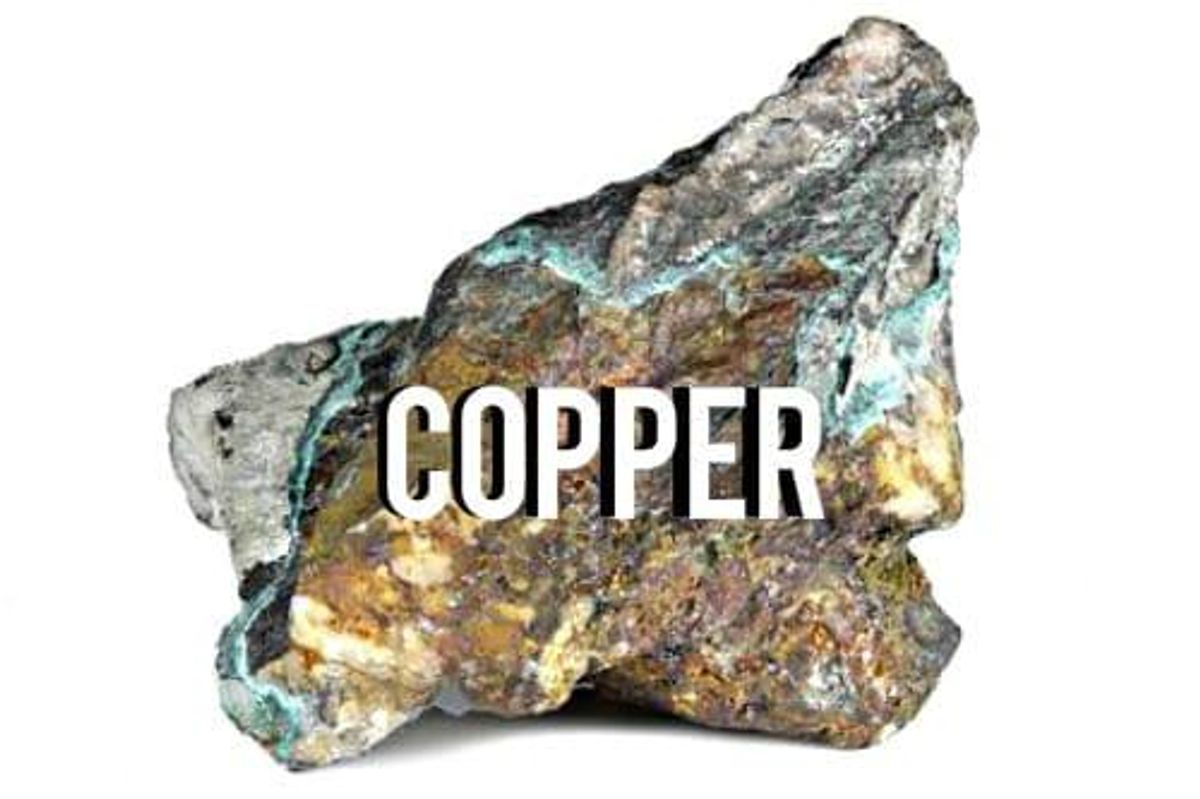Copper Ore Types: Sulfides vs. Oxides
What are the different types of copper ore, and how are they processed? Here’s a brief primer on the subject for investors.

Copper-containing rock, or copper ore, holds only a small percentage of copper. Most of the rock is unwanted material, typically referred to as gangue.
There are two main types of copper ore that are of interest: copper oxide ores and copper sulfide ores. Both ore types can be economically mined, but they are processed in different ways.
Copper sulfide ores are typically the most profitable copper ore type to mine. That is because they have high copper content, and the copper in them can more easily be separated from unwanted minerals. However, copper oxide ores have an advantage in that they are more abundant.
Read on for an overview of copper oxide ores and copper sulfide ores, with a focus on how they’re processed. For investors interested in copper production, having a good handle on this information can be an important part of deciding which companies involved in copper mining are best to invest in.
What are copper oxide ores?
As mentioned, copper oxide ores are not as attractive an exploration target as copper sulfide ores due to their lower grade. However, in some cases low-grade copper oxide ores can still be economically mined because they can be processed at a lower cost than copper sulfide ores.
Oxidized copper orebodies may be treated in several ways. For instance, hydrometallurgical processes are used to treat copper oxide ores that are dominated by soluble minerals, such as copper carbonate minerals. These copper oxide ores are usually leached using sulfuric acid to liberate the copper minerals into a solution of sulfuric acid laden with copper sulfate solution. The copper sulfate solution, called the pregnant leach solution, is then stripped of copper via a solvent extraction and electrowinning (SX-EW) process.
Alternatively, the copper can be precipitated out of the pregnant leach solution through a process called cementation, whereby the copper is contacted with scrap iron. Copper production through cementation is usually less pure than SX-EW copper.
What are copper sulfide ores?
Different methods are used to process copper sulfide ores depending on the concentration of copper within the ore — higher-concentrated ores can be separated via smelting, while lower-concentrated ores are separated via hydrometallurgical processes.
A bacterial oxidation heap leach process can be used to oxidize sulfides to sulfuric acid in some supergene sulfide deposits. That allows for simultaneous leaching with sulfuric acid to produce a copper sulfate solution.
As with oxide ores, SX-EW tech is used to recover copper from a pregnant leach solution. Secondary sulfides, which are formed by supergene secondary enrichment, are resistant to sulfuric leaching.
When rich enough, native copper orebodies may be treated to recover contained copper through equipment such as a gravity separation circuit. Supergene copper ores rich in sulfides may be concentrated using froth flotation.
What is the most important copper ore?
An additional point to note is that chalcopyrite, a brass-yellow mineral, has been considered the “most important” ore of copper for thousands of years.
This particular ore occurs in most sulfide mineral deposits, with some chalcopyrite existing in veins; some of these ores contain significant amounts of zinc instead of iron ore. Chalcopyrite is also associated with similar minerals such as pyrite, sphalerite and bornite.
One of the areas in which this mineral is found is in mining industry major BHP’s (ASX:BHP,LSE:BHP,NYSE:BHP) Olympic Dam asset in South Australia, which consists of a large underground mine, along with surface operations; the project also features two grinding circuits where high-grade copper concentrate is extracted from sulfide ore.
The deposit hosts large amounts of other mineral resources too, such as gold, silver and uranium.
The above information provides a good overview of the types of copper ore and how copper processing occurs, but as all savvy investors know, more information is better. Check out our article on copper deposit types to learn how copper is found and to find out about the process of copper extraction from copper mines.
This is an updated version of an article first published by the Investing News Network in 2011.
Don’t forget to follow us @INN_Resource for real-time news updates!
Securities Disclosure: I, Melissa Pistilli, hold no direct investment interest in any company mentioned in this article.
- Copper Reserves: Top 5 Countries ›
- LME Copper vs. COMEX Copper ›
- When Will Copper Go Up? ›
- Copper Refining: From Ore to Market ›
- How to Invest in Copper ›





